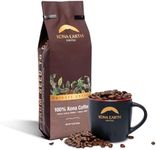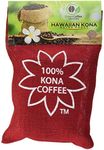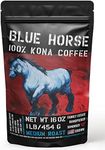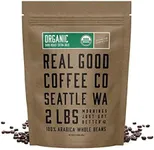Buying Guide for the Best Kona Coffees
Choosing the right Kona coffee can be a delightful experience if you know what to look for. Kona coffee is known for its unique flavor profile and is grown in the Kona region of Hawaii. When selecting Kona coffee, it's important to consider several key factors that will influence the taste, aroma, and overall quality of the coffee. Understanding these factors will help you find the perfect Kona coffee that suits your preferences and needs.GradeThe grade of Kona coffee indicates the quality of the beans. Higher grades, such as Extra Fancy and Fancy, have larger beans with fewer defects, resulting in a smoother and more consistent flavor. Lower grades, like Prime and Kona #1, may have more defects and smaller beans, which can affect the taste. If you prefer a premium coffee experience, opt for higher grades. However, if you are looking for a more affordable option with a decent flavor, lower grades can still be enjoyable.
Roast LevelRoast level refers to how long and at what temperature the coffee beans are roasted. Light roasts preserve the original flavors of the beans, offering a brighter and more acidic taste. Medium roasts provide a balance between the bean's natural flavors and the roasting process, resulting in a well-rounded flavor. Dark roasts have a bolder, more robust taste with less acidity. Choose a roast level based on your flavor preference: light for a more delicate and fruity taste, medium for a balanced flavor, and dark for a strong, rich taste.
OriginWhile all Kona coffee comes from the Kona region, the specific farm or estate where the coffee is grown can influence its flavor profile. Different farms may have unique growing conditions, such as soil composition and microclimate, which can affect the taste of the coffee. Some farms may also use different processing methods. If you have the opportunity, try coffee from different farms to discover which origin you prefer. This can be a fun way to explore the diverse flavors within the Kona coffee category.
Processing MethodThe processing method refers to how the coffee beans are handled after they are harvested. Common methods include washed (or wet) processing, natural (or dry) processing, and honey processing. Washed processing tends to produce a cleaner and brighter flavor, while natural processing can result in a fruitier and more complex taste. Honey processing is a middle ground, offering a balance of both. Consider your taste preferences when choosing a processing method: washed for a clean and crisp flavor, natural for a fruity and bold taste, and honey for a balanced and sweet profile.
FreshnessFreshness is crucial for the best coffee experience. Coffee beans start to lose their flavor and aroma shortly after roasting. Look for Kona coffee that has a roast date on the packaging and choose the freshest beans available. Ideally, you should consume the coffee within a few weeks of the roast date. Freshly roasted coffee will provide a more vibrant and enjoyable flavor. If you buy whole beans, grind them just before brewing to preserve their freshness and maximize the taste.

















